blog of physics medicine and rehabilitation enthusiast
Don't wanna be here? Send us removal request.
Text
Women with Metabolic Syndrome Tend to Increase Risk of OA Genu or severe OA Genu


By total sample around 25,000+ there were 8,491 subject included in the research in Korea. The Metabolic syndrome analysed were obesity, dislipidemia, diabetes melitus type 2, and hypertension.
This result also effeted by the numbers of metabolic syndrome incidence in women was greater than in men. But, the large sample in survey make this result applicable and can describe general population.
doi: 10.2340/16501977-2561
#physiatry#physicalmedicineandrehabilitation#physiatrist#physicalmedicine#rehabilitation#medicine#metabolicsyndrone#medicalstudent#residence#PMR#JRM
2 notes
·
View notes
Photo

Cellular Self Digestion Process Triggers Autoimmune Disease
Autophagy refers to a fundamental recycling process of cells that occurs in yeast, fungi, plants, as well as animals and humans. This process allows cells to degrade their own components and thus activate energy resources to be able to adapt to nutritional needs. In addition, autophagy plays a central role in steering an organism’s immune response. Autoimmune diseases arise from an abnormal immune response to a normal body part such as the central nervous system in patients with multiple sclerosis.
The research is in PNAS. (full access paywall)
25 notes
·
View notes
Photo

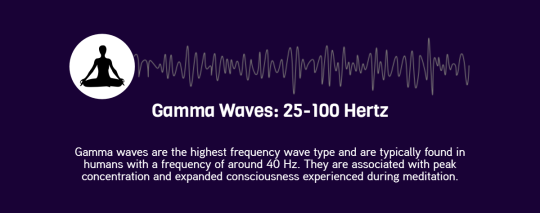
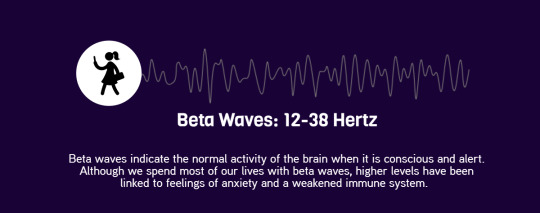
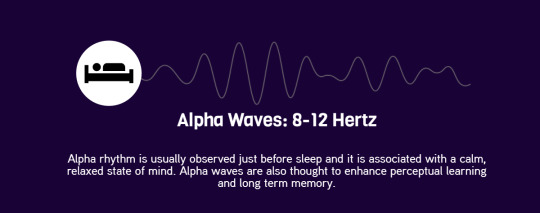
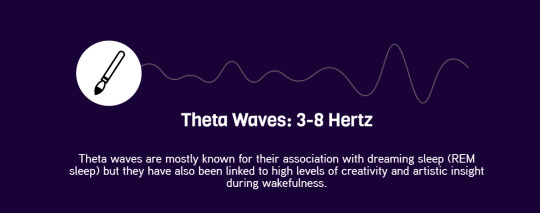


A human brain has around 86 billion neurons, and the communication between these neurons are constant. The sheer scale of these interactions mean a computer (an EEG) can register this electrical activity, with different frequencies indicating different mental states.
Sources
12K notes
·
View notes
Text
The 12 Cranial Nerves and Starbucks

When you walk into Starbucks and you..
I. Smell the coffee aroma (olfactory)..
II. Read the order menu from about 20 feet away (optic) then you..
III. Pupils constrict as you look at items, such as muffins, closer (oculomotor)..
IV. You look up at salesperson then down at your money as you pay (trochlear)..
V. You clench your teeth and touch your face when they called your drink (trigeminal)..
VI. You look side-to-side to see if anyone else has ordered the same drink (abdsucens)..
VII. You smile because you realize this IS your drink (facial), then..
VIII. You hear someone say “You can sit here, we are leaving” (auditory). As you sit..
IX. You taste the sweet whipped cream on the top of your drink (glossopharyngeal)..
X. You say “Ahhhh this is good!” (vagus)..
XI. You look at the person next to you because they heard you and then you shrug your shoulders (spinal accessory)..
XII. When they look away you stick your tongue at them (hypoglossal)!
3K notes
·
View notes
Photo

Evaluating axis from ECG (Mnemonic)
Hi everyone! We are going to learn how to determine the axis from an electrocardiogram =D
First of all, do you know which two leads should be looked at to determine whether axis is in the normal quadrant or if it is Left Axis Deviation (LAD) or Right Axis Deviation (RAD)?
Look at lead I and lead II. Sounds simple! ^__^
An upright (positive) QRS in leads I and II is normal (–30 degrees to +105 degrees). In left-axis deviation, there is an upright QRS in lead I and a downward (negative) QRS in lead II ( +105 degrees).
How do I remember this? @_@
Thumbs up method: Lead I = Left thumb, Lead II = Right thumb.
Wait, why lead I is left thumb and lead II is the right thumb? Because left is a smaller word and it gets the smaller number, that is, one! Right has more alphabets and it gets the bigger number, that is, two.
Left thumb up (I) + Right thumb up (II) = Normal. Left thumb up (I) + Right thumb down (II) = LAD. Left thumb down (I) + Right thumb up (II) = RAD.
Mnemonic method: Left leaves, right returns.
That’s all! Have a splendid week everyone
2K notes
·
View notes
Text
3rd Year Struggles: How to Look Less Stupid than You Are
Dear rising MS3s,
Welcome to the big show - sorta. Third year is this magical time where you are expected to know how to take care of real patients. Rather than worrying about that, I am sure you are busy taking selfies with your white coat on and stethoscope around your neck while tweeting about how early you have to start getting up, #medschoolproblems.
This may come as a shock, but you are a clinical moron. The sooner you accept that, the sooner we can move on to improving it. I don’t care if you are coming off your 260 step 1 score, real patients don’t present with multiple choices. All that score means is you are good at diagnosing and treating paragraphs of words, not people. I am only saying this from experience.
When you start your first day on the wards you are going to realize you got pushed into the deep end of the pool, sans floaties. Like someone truly drowning, you will be tempted to flail about, reaching out for anyone to save you. Don’t. No one has time to hold your hand, and you will quickly make people hate you if you constantly beg for advice/help/guidance, etc.
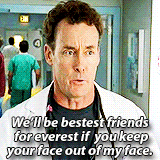
Have no fear, I am going to give some tips to make the transition easier and help you look semi-competent. Behold my list of life-saving resources for third year.
1. Scut Sheets (http://www.medfools.com/downloads.php) - you will likely follow 1-5 patients while on the wards. This sounds easy, but things move fast and you don’t want to be presenting old data on rounds. Scut sheets allow you to organize your patient information in a way that is easily accessible and portable (iPads are great, but in my experience you can’t beat good old paper). Further, the H&P sheets help to remind you of all of the things you need to examine/inquire about. You don’t want to be the student who comes back to report on a patient with epigastric pain in whom you never examined the cardiopulmonary system. Print a couple of each style to find one you like.
2. Stanford 25 (http://stanfordmedicine25.stanford.edu/index.html) - remember that time before step 1 studying, when you had to practice actually touching people? That was called the physical exam, and you are expected to actually do that… on every patient… everyday. Better refresh on it so you don’t look like a fool palpating the thyroid over the thyroid cartilage. Go to the website, click “The 25″ button and see the 25 physical exam skills every student should know, along with detailed explanations.
3. MedCalc (http://medcalc.medserver.be)

Enough said. Qx Calc is also worth downloading (http://www.qxmd.com/apps/calculate-by-qxmd).
3. Journal Club (http://www.wikijournalclub.org/wiki/Main_Page) - I guarantee that during the year some jerk-off attending is going to ask you, “what is the best NOAC for atrial fibrillation?” Obviously, like most, you will stutter because all you know to use in Afib is warfarin. Then he or she will smile, knowing they have established their superiority, and tell you to look it up and do some sort of presentation. Welcome to the best tool ever for such scenarios. This wiki is run by a team of physicians who synthesize large trials into digestible snippets. The app is well worth the money too. (The answer to the above question is apixaban, by the way, as determined by the ARISTOTLE trial; not that this scenario is based on a real event that occurred to me or anything).
4. Smart Medicine (http://smartmedicine.acponline.org) - this app is amazing. Seriously. It is free to American College of Physician (ACP) members; and membership is free to students. You should join just for this app. This is much less cumbersome than UpToDate and will will make you shine when you present your assessment and plan (also, rumor is that DynaMed and ACP have teamed up to create an even more amazing tool that is coming out in August, also free to members).
5. Medscape (http://www.medscape.com) - this is an awesome resource that is free. Medscape is one of my go to apps for understanding disease pathophysiology. Another feature, which most students don’t realize, is the articles on surgical procedures. This is HUGE for your surgery clerkship. You can read over the procedure, see relevant anatomy and know just enough to be one step ahead of this guy:

Plus you get updates on medical news, have access to practice questions, etc. Get it, use it, love it.
6. Online Med Ed (https://onlinemeded.org) - aside from learning real medicine, third year is about preparation for the step 2 of the USMLE. I advise finding a question bank and organized program to keep your studying on track throughout the year. Enter God’s gift to med students. This is one man and a mystical dry erase board that will make learning clinical medicine easier than cooking a Totino’s pizza. And it is one of the few things cheaper than a Totino’s!
So there you have it. You now are better equipped for the coming onslaught of pimp questions. My suffering is your gain. Below I will list a few other apps I have used this year that were less important to my success. Happy studying.
ASCVD Risk Estimator (http://tools.cardiosource.org/ASCVD-Risk-Estimator/) - I believe there is an app in the app store as well.
Anticoag Evaluator (http://www.acc.org/tools-and-practice-support/mobile-resources) - see the risk factors for coagulation
CDC vaccine schedules app (http://www.cdc.gov/vaccines/schedules/hcp/schedule-app.html)
Read by QxMD (https://www.readbyqxmd.com) - allows you to get medical articles directly to your phone using your institutional access.
Sensitivity and Specificity (http://lifeinthefastlane.com/techtool-thursday-055-sensitivity-and-specificity/) - link to the app and review
Pap Guidelines (http://appcrawlr.com/ios/pap-guide) - a free version of the ASCCP app and a life saver while on Gyn.
3K notes
·
View notes
Link
A new type of antibody therapy appears to have completely blocked the primate equivalent of HIV in infected monkeys.
More than two years after the treatment, the monkeys are now drug free, have no symptoms, and there are almost no traces of the virus in their systems. The results are so impressive that clinical trials have already begun with human patients in the US.
“We have good reasons to believe that the therapy will work similarly in humans,” said lead researcher Lutz Walter from the German Primate Centre in Göttingen. “It would be a breakthrough for the future treatment of HIV patients.”
In the trial, rhesus macaques infected with simian immunodeficiency virus (SIV) - the primate version of HIV - were given a standard antiretroviral drug for 90 days, before being treated with an antibody called Vedolizumab for 23 weeks.
After completing the therapy, all monkeys showed sustained control of the infection, and there were almost no traces of the virus in their blood or gastro-intestinal tissues.
Impressively, two years later, the “viral load remained low, the immune system intact, and the rhesus macaques healthy”, a press release explains. The monkeys, for now at least, are in “sustained remission”.
Continue Reading.
330 notes
·
View notes
Photo
Need to learn this more

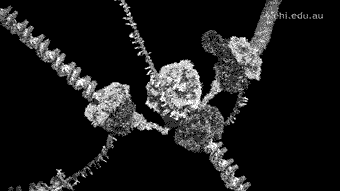

The DNA Replication Complex, an assembly of proteins that synthesizes new DNA before cell division. It consists of Helicase, Primase, Single-strand binding proteins, and DNA polymerase III. Because DNA strands can only be copied in one direction, the complex must pull out loops of one strand and replicate it in fragments. At this moment there are hundreds of trillions of these molecular machines in constant activity within your body.
18K notes
·
View notes
Photo

Study identifies neural circuits involved in making risky decisions
New research sheds light on what’s going on inside our heads as we decide whether to take a risk or play it safe. Scientists at Washington University School of Medicine in St. Louis located a region of the brain involved in decisions made under conditions of uncertainty, and identified some of the cells involved in the decision-making process.
The work, published July 27 in The Journal of Neuroscience, could lead to treatments for psychological and psychiatric disorders that involve misjudging risk, such as problem gambling and anxiety disorders.
“We know from human imaging studies that certain parts of the brain are more or less active in risk-seeking people, but the neural circuits involved are largely unknown,” said Ilya Monosov, PhD, an assistant professor of neuroscience and senior author on the study. “We found a population of value-coding neurons that are specifically suppressed when animals make a risky choice.”
Value-coding neurons are cells whose activity reflects the value of a stimulus – in this study, the more juice that was offered to a monkey, the bigger the neurons’ response. However, shortly before the subject made a risky choice, these neurons became suppressed.
The researchers also found a separate group of neurons that signal information about uncertainty after the choice but before the risky outcome.
As they go about their everyday lives, people often must choose between a safe option and a better, but riskier, option. Do you stay in a secure job or quit to start your own business? Do you keep $2 in your pocket or use the money to buy a lottery ticket?
When the system of evaluating risk goes awry, it can have a severe impact on people’s lives. Maladaptive risky behaviors are a feature of compulsive gambling, bipolar disorder and attention deficit hyperactivity disorder. People with anxiety, on the other hand, err too far on the side of caution.
To study the neuronal circuits of risk taking, Monosov and colleagues gave rhesus monkeys – whose brains are structured very similarly to ours – a choice between a small amount of juice or a 50-50 chance of receiving either double that amount of juice or nothing at all. Over time, the amount of juice received under either condition would be the same, but one option was safe and the other risky.
It turns out rhesus monkeys like to live on the edge. The monkeys chose the risky option more often than the safe option. Moreover, the researchers found that a group of value-coding neurons in a part of the brain called the ventral pallidum were selectively suppressed when monkeys chose a risky option over a safe one. The ventral pallidum plays an important role in controlling levels of dopamine – a molecule that transmits signals between neurons and makes us feel good.
“The ventral pallidum inhibits dopamine neurons, and suppression of this area during risky behavior may increase dopamine release,” said Monosov, who is also an adjunct professor of biomedical engineering.
The results of the study may fit with observations showing an increase in risky behavior among people who take drugs that increase dopamine – such as methamphetamine users and Parkinson’s disease patients treated with L-dopa.
The study also found neurons in a nearby brain area called the medial basal forebrain became most active after the monkeys made a risky choice but before they learned the outcome of their choice – juice or no juice. That part of the brain provides inputs to a wide network of cortical brain regions involved in learning and memory.
“It makes sense that choosing an uncertain option is an important part of learning,” Monosov said. “When people are uncertain, they are driven to resolve the uncertainty. They approach the uncertain option, explore it, and learn from the outcome of their actions.” Modulating the medial basal forebrain by uncertainty could promote or influence learning. However, this remains to be tested.
Monosov now is studying whether temporarily turning off the ventral pallidum and the medial basal forebrain with targeted drug treatments affect the monkeys’ risk preferences and the strategies they use to learn.
“There are no anatomically targeted treatments for psychiatric disorders associated with misjudging risk, such as pathological gambling and anxiety,” Monosov said. “Now that we know where uncertainty is processed in the brain, we can start looking for ways to modulate it.”
114 notes
·
View notes
Link
It might be cold comfort for those of you struggling with bad skin right now, but a new study has found that people with acne tend to have younger-looking skin as they grow older.
Comparing genetic information from women with and without acne, the study found that acne-prone women had significantly longer telomeres (or chromosome caps) than their clear-skinned counterparts, which means their cells were better protected from the deterioration that usually comes with age.
“For many years, dermatologists have identified that the skin of acne sufferers appears to age more slowly than in those who have not experienced any acne in their lifetime. Whilst this has been observed in clinical settings, the cause of this was previously unclear,” said lead researcher Simone Ribero, a dermatologist at King’s College London.
“Our findings suggest that the cause could be linked to the length of telomeres which appears to be different in acne sufferers and means their cells may be protected against ageing.”
Continue Reading.
384 notes
·
View notes
Text
Hmmmmm
22 Science-Backed Study Tips to Ace a Test
‘Tis the season! I found this article while trying to muster up some motivation to study for finals. It was really helpful to me and I thought that maybe some tumblr friends might benefit from it too! Good luck with finals everyone! I believe in you!
Remember Your Stuff
1. Study when sleepy. Bedtime stories are for wimps. Instead of reading The Berenstein Bears, try studying for a few minutes right before hitting the hay. During sleep, the brain strengthens new memories, so there’s a good chance we’ll remember whatever we review right before dozing off . (Just try not to bring work into the actual bed, since it can make it harder to get a good night’s sleep.) And though bedtime is primo study time, it might also help to crack open the books after cracking open those eyes in the A.M.—in the morning, the brain still has lots of room to absorb new information.
2. Space it out. A relatively new learning technique called “spaced repetition” involves breaking up information into small chunks and reviewing them consistently over a long period of time. So don’t try to memorize the entire periodic table in one sitting—instead, learn a few rows every day and review each lesson before starting anything new.
3. Tell a tale. Turning the details you need to remember into a crazy story helps make the information more meaningful. For example, remember the order of mathematic operations PEMDAS this way: Philip (P) wanted to eat (E) his friend Mary (M) but he died (D) from arsenic (AS) poisoning.
4. Move your butt. Research suggests studying the same stuff in a different place every day makes us less likely to forget that information. That’s because, every time we move around (from the library to the coffee shop, or the coffee shop to the toilet seat), we force the brain to form new associations with the same material so it becomes a stronger memory.
5. Switch it up. Don’t stick to one topic; instead, study a bunch of different material in one sitting. This technique helps prepare us to use the right strategy for finding the solution to a problem. For example, doing a bunch of division problems in a row means every time we approach a problem, we know it’ll require some division. But doing a series of problems that require multiplication, division, or addition means we have to stop and think about which strategy is best.
6. Put yourself to the test. Quizzing ourselves may be one of the best ways to prepare for the real deal. And don’t worry about breaking a sweat while trying to remember the name of the 37th U.S. president (fyi, it’s Nixon): The harder it is to remember a piece of information in practice mode, the more likely we are to remember it in the future.
7. Write it out. Put those third-grade penmanship lessons to good use. Research suggests we store information more securely when we write it out by hand than when we type it. Start by recopying the most important notes from the semester onto a new sheet of paper.
8. Make me wanna shout. Reading information out loud means mentally storing it in two ways: seeing it and hearing it . We just can’t guarantee you won’t get thrown out of the library.
Stay Focused
9. Come together (right now). Group work doesn’t fly with everyone, but for those who benefit from a little team effort, a study group’s the way to go. Pick a few studious pals and get together every few days to review the material. Put one person in charge of delegating tasks (snack duty, music selection) and keeping the group on target with its goals.
10. Treat yo’ self! A healthy holiday cookie, a walk around the block, five minutes of tweet-time: whatever floats your boat. Knowing there’s a little reward waiting for us at the end of just a few pages makes it easier to beat procrastination while slogging through a semester’s worth of notes.
11. Drink up. Sorry, not that kind of drink. Instead, hit the local coffee shop for something caffeine-filled; there’s lots of research suggesting coffee (and tea) keeps us alert, especially when nothing seems more exciting than the shiny gum wrapper on the library floor .
12. Take a time out. Taking time to plan is one of the most important skills a student can have. Don’t just start the week with the vague goal of studying for a history exam—instead, break up that goal into smaller tasks. Pencil it in on the calendar like a regular class: For example, allot every day from 1 to 3 p.m. to review 50 years’ worth of info.
13. Gimme a break. The KitKat guys said it, and so does science: Taking regular breaks can boost productivity and improve our ability to focus on a single task . For a real productivity boost, step away from the screen and break a sweat during a midday gym sesh.
14. Work it out. Get stronger and brainier at the same time. Research has found just half an hour of aerobic exercise can improve our brain-processing speed and other important cognitive abilities. Jog a few laps around the block and see if you don’t come back with a few more IQ points.
15. Daaaance to the music. As anyone who’s ever relied on Rihanna to make it through an all-night study session knows, music can help beat stress. And while everyone’s got a different tune preference, classical music in particular has been shown to reduce anxiety and tension. So give those biology notes a soundtrack and feel at least some of the stress slide away.
16. Nix the ’net. We’ve all been there, facing the siren call of a friend’s Facebook wall on the eve of a giant exam. If a computer’s necessary for studying, try an app (such as this one) that blocks the Internet for a short period of time and see how much more you get done.
17. Say om. Just before staring at a piece of paper for three hours, stare at a wall for three minutes. Research suggests meditation can reduce anxiety and boost attention span. While those studies focus mostly on regular meditation, there’s no harm in trying it out for a few minutes to calm pre-test jitters .
18. Doze off. When there’s a textbook full of equations to memorize, it can be tempting to stay up all night committing them to memory (or trying to). But all-nighters rarely lead to an automatic A—in fact, they’ve been linked to impaired cognitive performance and greater sensitivity to stress . In the days leading up to a big exam, aim to get those seven to nine hours a night so sleep deprivation doesn’t undo all the hard work you’ve put in.
19. Own the Omegas. Omega-3 fatty acids, found in certain fish, nuts, and olive oil, are known for their brain-boosting potential. One study found that eating a combination of Omega-3-and Omega-6 fatty acids before an exam actually reduced test anxiety .
20. Feel free to inhale. Dusty old library again… or spa day? Research has found that catching a whiff of essential oils (like rosemary or lavender) can help calm students down before a big exam . Skip the frantic last-minute review and try a few minutes of aromatherapy instead.
21. Practice your brain pose. Hardcore yogis tend to have better cognitive abilities—especially attention span—than folks less familiar with Down Dog . A few daily sun salutations may be all it takes to keep centered during finals period.
22. Learn what works. Some people are early birds; some are night owls; some prefer to study with a pal; others need complete and total silence. Experiment to find what’s most effective for you, and then stick with it!
Source: [x]
4K notes
·
View notes
Photo
Now I'm wondering I can control my self n keep going on

424 notes
·
View notes
Conversation
Kacamata kuda (?)
Hayooo, bener-bener dipake ya kacamata kudanya, ga pake wacana ya!
0 notes
Text
Just Do!
Belum terlambat untuk berubah, Lakukan apa yang kamu suka dan jangan terlalu dipikir terlalu dalam. Just do! Believe in yourself and Allah will guide you!
0 notes

